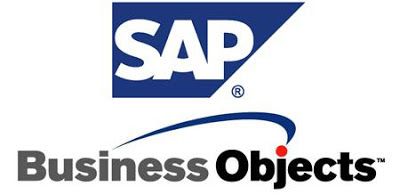Object-oriented
programming (OOP) is a system based on the concept of object-oriented
programming paradigm. The basic idea is to encapsulate data and functions that
can be applied to these data, together as closely as possible in a known object
and to the outside, so that methods of foreign objects can not manipulate these
data inadvertently.
Definition of Object-Oriented Programming
The definition
of what is Object-Oriented Programming and the core makes up varies, and is
also subject to change.
Alan Kay, the
inventor of Smalltalk and the term "object oriented", defined it in
the context of Smalltalk as follows:
First
Everything is an object, 2nd Objects communicate by sending and receiving
messages (in terms of objects), 3 Objects have their own memory (in terms of
objects), 4 Every object is an instance of a class (which must be an object), 5
The class holds the shared behavior for its instances (in the form of objects
in a program list), 6 To eval a program list, control is passed to the first
object and the remainder is treated as its message
"1
Everything is an object, 2nd Objects communicate by sending and receiving
messages (which consist of objects), third Objects have (structured as objects)
to their own memory, 4 Each object is an instance of a class (which must be an
object), 5 The class includes the conduct of all its instances (in the form of
objects in a program list), 6 To run a program list, the execution control is
given to the first object and the remaining treated as the message "
-
Alan Kay: The Early History of Smalltalk (1993)
But later Alan
Kay expressed his dissatisfaction with his chosen term object orientation, this
would have come to the real core issue, in his view, the messaging, short In 2003 Alan Kay gave the following definition of object-oriented programming:
"OOP
to me means only messaging, local retention and protection and hiding of
state-process, and extreme late-binding of all things."
"OOP
to me means only messaging, local maintaining, protecting and concealing the
process state and latest possible binding of all things."
-
Alan Kay: (answer to a query, 2003)
The ISO / IEC
2382-15 standard of 1999 defines the term object-oriented, however, as follows:
"Pertaining
to a technique or a programming language that supports objects, classes, and
inheritance."
"This
refers to a technique or programming language that supports objects, classes
and inheritance."
-
ISO / IEC 2382-15
The ISO
definition is now generally regarded as too simplistic, as well as classless
object-oriented languages exist and also the inheritance now less importance
is attached than in the 1990s.
Concepts
The individual
components that make up an object-oriented program consists during its
execution are called objects. The objects are there usually designed on the
basis of the following paradigms:
Abstraction
Each
object in the system can be used as an abstract model of an actor can be seen,
the handle orders, change report his condition and can communicate with the
other objects in the system without having to disclose to how these skills are
implemented (see abstract data type (ADT )). Such abstractions are either
classes (in the class-based object orientation) or prototypes (in the
prototype-based programming).
Class
The
data structure of an object is defined by the attributes (including properties)
of its class definition. The behavior of the object is determined by the
methods of the class. Classes can inherit from other classes (inheritance). It
inherits the class data structure (attributes) and the methods of the
inheriting class (base class).
Prototype
Objects
are created by cloning existing objects and other objects can be used as
prototypes, and thus make their own methods available for reuse, the new
objects need to define the differences from their prototype. Changes to the
prototype are dynamically effective even at its derived objects.
Encapsulation
When
encapsulation is known in programming hiding implementation details. On the
internal data structure can not be accessed directly, but only through defined
interfaces. The internal state of other objects can not read or modify objects
in unexpected ways or. An object has an interface, which is determined as to be
on how to interact with the object. This prevents the circumvention of
invariants of the program.
Polymorphism
Ability
of an identifier, depending on its use to accept different data types.
Different objects can respond to the same message differently. If the
assignment of a message to respond to the message only resolved at run time,
this is called late binding.
Feedback
Different
objects communicate via a message-response mechanism, which leads to changes in
the objects, and generates new messages calls. For the coupling is as an index
of the degree of feedback.
Heredity
Inheritance
is simplified to a derived class, the methods and attributes of the base class
also has, thus "inherits". Thus, the derived class accesses it. New
types of objects can be determined on the basis of already existing object
definitions. You can create new components are added or existing ones can be
overlaid.
Persistence
Object
variables exist as long as the objects are present and "expire" not
after processing a method.










